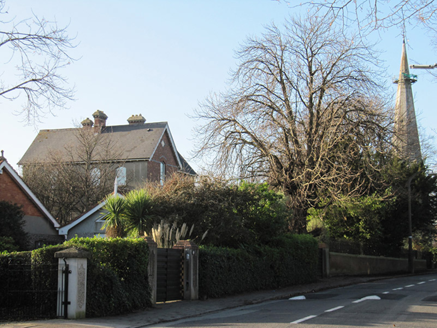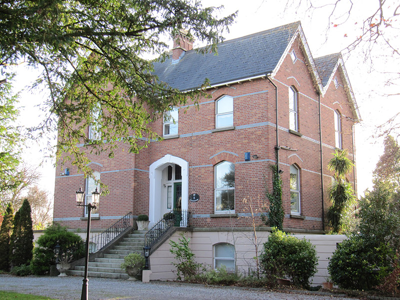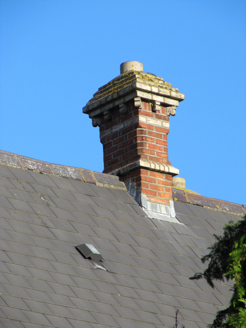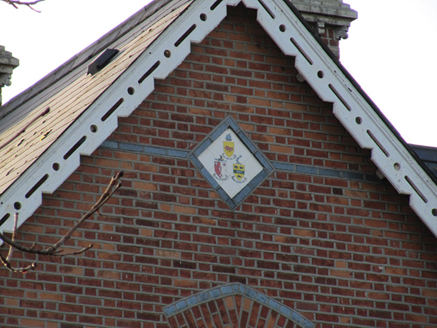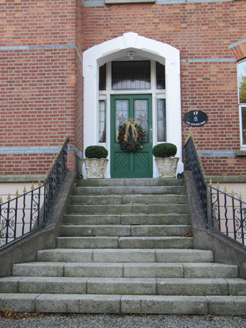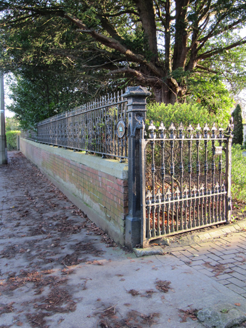Survey Data
Reg No
50030325
Rating
Regional
Categories of Special Interest
Architectural, Historical, Social
Previous Name
Clontarf Church of Ireland Rectory
Original Use
Rectory/glebe/vicarage/curate's house
In Use As
House
Date
1875 - 1880
Coordinates
319772, 236339
Date Recorded
19/12/2014
Date Updated
--/--/--
Description
Detached double-pile three-bay two-storey former rectory over raised basement, built 1877, having gabled projecting bay to east end of front and to side elevations. Now in use as house. M-profile pitched artificial slate roof, with clay roof tiles, polychrome brick chimneystacks, carved timber bargeboards and sheeted timber eaves. Red brick walls, laid in Flemish bond, having blue brick courses and tiled panels to gables. Diamond-shaped plaque to upper front gable with ecclesiastical motifs and set within blue-brick frame. Cut granite plinth course over channelled rendered walls to basement. Tudor arch window openings having blue and red brick voussoirs, cut granite sills and replacement windows. Tudor arch door opening, having recessed half-glazed timber panelled door with leaded sidelights and overlights. Flight of cut granite steps with recent railings. Double-leaf cast-iron gates to site entrance, with cast-iron piers having pointed arch detailing, wrought-iron railings on red brick plinth wall with cut granite coping. Set in own grounds, with gardens to front and rear, to east of Church of Ireland.
Appraisal
This former rectory retains much of its Victorian character, with the extensive use of red brick, the raised entrance, and gabled elevations, all being typical features of the domestic architecture of the time. The use of tiled plaques and blue brick courses adds colour and interest. It was built by George Tyrell of Russell Place, to designs by Robert Phillips, an architect who had worked for the Ecclesiastical Commissioners before its disestablishment in 1870. The land was leased by trustees of the congregation of the Church of Ireland from J.E.V. Vernon in 1877 at a rent of £10 per year, on condition that a house for a clergyman be built within five years. A loan of £1,000 was drawn down from the Commissioners of Public works, through the Glebe Loan Ireland Acts 1870-5.
